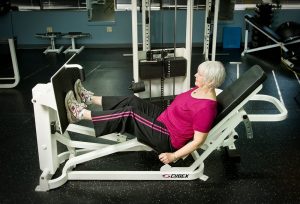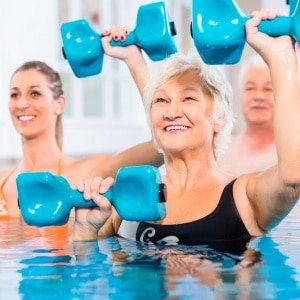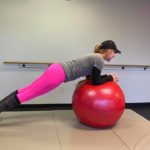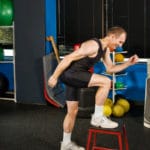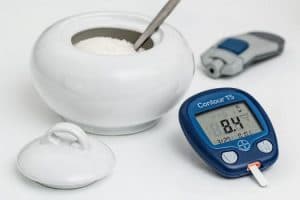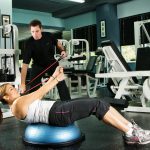July 2020
Personal Training & Gym Convenience = Better Fitness
Workplace fitness centers offer otherwise-sedentary employees an on-site option by which to develop and maintain exercise-based fitness. Encouraging staff to take advantage of the facilities and services, however, is the first challenge. One idea that should be considered is more personalized supervision to provide safe and efficient exercise guidance.
An Australian group studied the “changes to cardiometabolic risk factors in a workplace environment” under 3 conditions: personal (PT, personal trainer), non-personal (NP, gym floor staff guidance if requested) and zero supervision (C, controls.) All were given a 16-week program of moderate-to-high intensity aerobic and resistance training. Basic blood values (cholesterol screen, blood sugars, and CRP (inflammation marker)) were tested at the start, at 8 weeks and at the end of the program. Aerobic and strength tests were also administered, as was a body composition test with DEXA scans.
A twice-weekly progressive cardio and strength program was provided each group, with the PT and NP at the on-site facility and the C at a facility of their own choosing.
Both PT and NP improved cardio fitness compared to C at 8 and 16 weeks. The PT had greater increases in lean mass and more fat loss compared to the other groups, presumably due to greater compliance and attendance as well as “greater total mechanical work” with a trainer. Strength gains were also greater in the P and NP groups, especially by week 16.
The PT group saw greater improvements in strength and body composition compared NP. It was concluded that on-site facilities and 1:1 supervision of exercise are especially valuable for the first several months of an exercise program.
JSCR Mar. 2020
The Older Woman’s Strength Rx: 1-Set = Multiple Sets
A decades’ long debate in the strength and conditioning world has settled on the fact that multiple sets of an exercise for a particular body part (legs, arms, etc.) are optimal for strength and size improvements. Generally, 3-5 sets are required, with body builders doing more and most others much less. A cooperative of Brazil and NY researchers asked a more specific question: do older women also require multiple sets in a 12-week program or would one be sufficient? This is a topic we’ve covered extensively in previous posts, here, here, here and most recently here.
They divided up 62 untrained older women (ages 60+ I’m sorry to say) into 3 groups: 1-Set (1-S), 3-Set (3-S) and Controls (C.) The exercisers did 8 exercises 3 times a week over a progressive 12-week program. They were assessed on BMI, muscle strength, DEXA for body composition, muscle quality (DEXA-determined lean muscle tissue of lower and upper limbs) and blood testing of insulin growth factor (IGF-1) which boosts growth and remodeling of muscle tissue and declines with age. (Healthy muscle growth is accompanied by higher IGF-1.)
As one could imagine, both groups of exercisers improved strength, muscle quality of both limbs, and increased IGF-1, compared to the controls.
Notable, however, is that there were few differences between the two exercise groups. 1-S actually out-performed 3-S on upper body strength improvements while 3-S was only slightly better for lower body strength gains. All other differences were insignificant.
The take home conclusion is that early into a strength training program for older adults, a single set is as good as multiple sets. Early on.
JSCR Apr. 2020
Tid Bits
Egg beaters, not the brand but the researchers who seem to oppose egg consumption, just took another beating. (Sorry, can’t help the punning today.) An American Journal of Clinical Nutrition article looking at the data of 177,000 people in 50 countries found that eating an egg a day was not associated with a higher risk of heart disease, early death or higher cholesterol. Another 2018 study in AJCN supported these findings. UC-Berkeley Wellness Letter May 2020
Three studies sound more alarms on world-wide obesity. A NEJM study indicated that half of all Americans will be obese by 2030 with 28 states having nearly 60% being obese. Another, conducted by a fitness industry group, projected that the per capita ratio of gyms and fast food restaurants to obesity and depression rates are highly correlated: fewer gyms, more fast food options, more obesity and depression. Finally, a University of Oxford, in England, report found obese women had a 21% higher risk of developing dementia than those with normal BMI. CBI March 2020
Yoga breath – which isn’t really bad breath – is touted to improve flexibility, strength, and meditation. A study from the University of Miami, aimed to test the benefits of this kind of respiration on lower-limb power. Thirty-two untrained subjects were strength and power tested, then taught 3 types of yoga breathing techniques. (Clearly insufficient time to perfect these complex patterns!) Then they were re-trained on them and re-tested leg strength 4 times – one for each technique and a control. The results showed “no improvements in isokinetic or isoinertial lower-body performance whether performed before or during [strength[ testing.” While consistent with previous studies, the fact that none of the subjects were yoga practitioners detracts from the conclusions, surely. JSCR Feb. 2020


